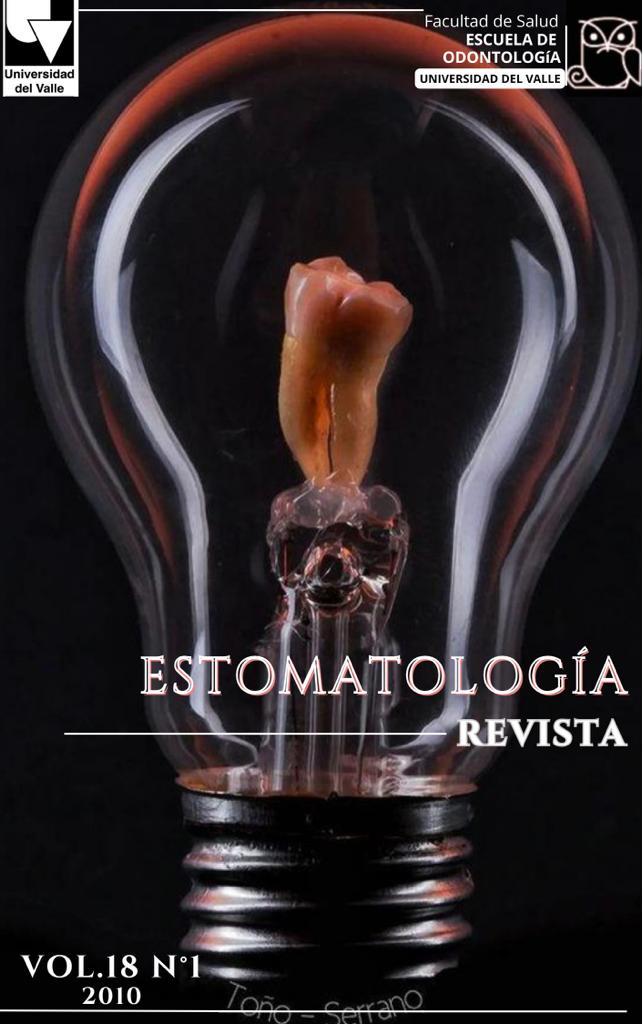Biochemical markers of bone metabolism
Main Article Content
The quantity and quality of bone tissue renewal are dependent on the generation of new bone (deposition) mediated by osteoblasts and the loss (resorption) mediated by osteoclasts. For each of these processes there are important markers that can be measured in serum or urine.
Resorption markers are products of metabolic degradation of bone matrix in particu-lar of the type I collagen (hydroxyproline, pyridinoline and deoxypyridinoline). In addition, the resorptive activity can also be evaluated through the tartrate resistant acid phosphatase (TRAP) and calcium-creatinine ratio in urine. Bone formation markers are collagen proteins (ALP, OCN), non collagen (ONC, OPN, BSP) or fragments of collagen synthesis (procollagen peptides).
2. Raisz L. Physiology and Pathophysiology of Bone Remodeling. Clinical Chemistry. 1995; 45:1353-1358.
3. Vasikaran S, Glendenning P, Morris HA. The Role of Biochemical markers of Bone Turnover in Osteoporosis Management in Clinical Practice. Clin Biochem Rev. 2006; 27:119-121.
4. Lim LS. Screening for Osteoporosis in the Adult U.S. Population ACPM Position Statement on Preventive Practice. Am J Prev Med 2009; 36(4):366-375
5. Binkley N, Ringe J. Alendronate/vitamin D3 70 mg/2800 IU with and without additional 2800 IU vitamin D3 for osteoporosis: Results from the 24-week extension of a 15-week randomized, controlled trial. Bone 2009; 44:639-647.
6. Seibel MJ. Biochemical Markers of Bone Turnover Part I : Biochemistry and Variability. Clin Biochem Rev. 2005; 26: 97-122.
7. Molina F. Marcadores Bioquímicos de Remodelado Óseo. Revista de Metabolismo mineral. 2003; 1:91-98.
8. Henning W. Comparison of total and bone-specific alkaline phosphatase in patients with nonskeletal disorders or metabolic bone diseases. Clinical Chemistry. 1996; 42: 1796-1804.
9. Delmas PD. Biochemical markers of bone turnover for the clinical assessment of metabolic bone disease. Endocrinol Metab Clin North Am 1990; 19:1-19.
10. Roman A, Wilson N. Fosfatasas alcalinas en el estudio de la osteopenia del prematuro. Rev Chil Pediatr 1993; 64: 359-363.
11. Singer F, Eyre DR. Using biochemical markers of bone turnover in clinical practice. Cleveland Clinic Journal Medicine. 2008; 75:739-750
12. Vasikaran S, Glendenning P,Morris HA. The Role of Biochemical Markers of Bone Turnover in Osteoporosis Management in Clinical Practice. Clin Biochem 2006; 27:119-121.
13. J Seibel. Biochemical Markers of Bone Turnover Part II: Biochemistry and Variability. Clin Biochem Rev 2006; 27: 123-138.
14. Cloos PA, Christgau S. Characterization of aged osteocalcin fragments derived from bone resorption. Clin Lab 2004; 50:585-598.
15. Kaisa K. Ivaska. Urinary Osteocalcin Is a Useful Marker for Monitoring the Effect of Alendronate Therapy. Clinical Chemistry. 2005; 51:2362-2365.
16. Delmas PD. Biochemical markers of bone turnover in: Theorical considerations and clinical use in osteoporosis. Am J Med 1993; 95:11S-6S
17. Ebeling PR, Peterson JM, Riggs BL. Utility of type 1 procollagen propetide assays for assessing abnormalities in metabolic bone disease. J Bone Miner Res 1992; 7:1243-50
18. Hultenby K, Reinholt FP, Norgard M, et al. Distribution and synthesis of bone sialoprotein in methaphyseal bone of young rats show a distintly different patterns from that osteopontin. Eur J Cell Biol 1994; 63(2):230-9.
19. Reinholt FP, Hultenby K Olberg A, et al. Osteopontin a possible anchor of osteoclast to bone. Proc Natl Acad Sci USA 1990; 87:4473-75.
20. Luporini G, Lazaretti-Castro M. Marcadores Bioquímicos da Remodelação Óssea na Prática Clínica. Arq Bras Endocrinol Metab 2002; 46:72-78.
21. Delmas DP. Bone Marker Nomenclature. Bone. 2001; 28:575-576.
22. Seibel MJ. Clinical Application of Biochemical Markers of Bone Turnover. Arq Bras Endocrinol Metab 2006; 50:603-620.
23. Farías, R, Rojas S, Sequera M, Martínez D, Ramos J, Riera G. Marcadores bioquímicos de remodelamiento óseo: fosfatasa ácida tartrato resistente (TRAP): fosfatasa alcalina (FAT) y cociente calcio/creatinina urinarios, en menopáusicas aparentemente sanas fumadoras y no fumadoras. Salus. 1999; 3:40-47.
24. Capeller B, Caffier H, Sutterlin MW, Dietl J. Evaluation of tartrate-resistant acid phosphatase (TRAP) 5b as serum marker of bone metastases in human breast cancer. Anticancer Res 2003; 23:1011-1015.
25. Hannon RA, Clowes JA, Eagleton AC, Al Hadari A, Eastell R, Blumsohn A. Clinical performance of immunoreactive tartrate-resistant acid phosphatase isoform 5b as a marker of bone resorption. Bone 2004; 34:187-194.
26. Halleen JM, Alatalo SL, Suominen H, Cheng S, Janckila AJ, Vaananen HK. Tartrateresistant acid phosphatase 5b: a novel serum marker of bone resorption. J Bone Miner Res 2000; 15:1337-45.
27. Akesson K. Biochemical markers of bone turnover. Acta Orthop Scand 1995; 66:376-386.
28. Rossert J, de Crombrugghe B. Type I Collagen Structure, Synthesis, and Regulation. En: Bilezikian JP, Raisz L, Rodan G. Principles of Bone Biology. 2 Ed. Orlando: Academic Press; 2002. 189-210.
29. Robins S. Pyridinium cross-links as bone resorption markers. En: Eastell R, Baumann M, Hoyle N, Wieczorek L. Bone Markers Biochemical and Clinical perspectives. Londres: Martin Dunitz Ltda; 2001.
30. Robins S, Brady J. Collagen Cross-Linking and Metabolism. En: Bilezikian JP, Raisz L, Rodan G. Principles of Bone Biology. 2 Ed. Orlando: Academic Press; 2002.
31. Midtby M, Magnus JH, Joakimsen RM. The Tromsø Study: A Population-Based Study on the Variation in Bone Formation Markers with Age, Gender, Anthropometry and Season in both Men and Women. Osteoporos Int. 2001; 12:835-843.
32. Watts N. Clinical Utility of Biochemical Markers of Bone Remodeling. Clinical Chemistry. 1999; 45:1359-1368.
- Juan Fernando Duque Osorio, Mario Alejandro Ortíz Salazar, Liliana Salazar Monsalve, Carlos Mejía Pavony, Mammals: evolution and dental nomenclature , Revista Estomatología: Vol. 17 No. 2 (2009)
- Ana Isabel Restrepo, Solange Velasco, Leonardo Franco, Evolution of Explanatory Models of Periodontal Disease Pathogenesis , Revista Estomatología: Vol. 17 No. 2 (2009)
Los autores/as conservan los derechos de autor y ceden a la revista el derecho de la primera publicación, con el trabajo registrado con la licencia de atribución de Creative Commons, que permite a terceros utilizar lo publicado siempre que mencionen la autoría del trabajo y a la primera publicación en esta revista.





